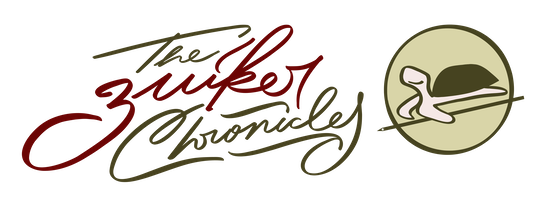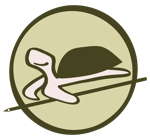For sale: Hawk's Landing
by Anton Zuiker on March 23, 2021

Erin and I are inching closer to building a new house here on our nine acres in Chapel Hill. One part of the plan is to find a partner to help us develop the land with a few other houses and the infrastructure (water, sewer, road) needed to support them. Or, we’d be happy to find someone who wants to buy our house and some of the land for their own living. We’re open to the options and flexible to making use of this beautiful corner of Chapel Hill that we are fortunate to own.
Our agent brought a drone a few weeks back to make a video showing the land, which we’ve affectionately dubbed Hawk’s Landing in honor of the red-tailed hawk I extracted from the fencing near our chicken coop. The hawk had swooped in to nab one of the hens but had flown right through the fence and was enmeshed in it, thrashing in the leaves. Once free, the hawk stood with its wings outstretched and glared at me. I took a step back and it turned and flew off through the trees out toward the spot we hope to build our new house.
What’s not for sale
Someone reached out to me recently to ask for this domain. I declined. The zuiker.com domain has been an important and valuable part of my life for the last 20 years. I intend to be blogging at this domain, writing posts from a patio looking out onto Hawk’s Landing, in another 20 years.
Watch this
by Anton Zuiker on March 21, 2021
In 1999, as Erin and I traveled the globe on our way home from our Peace Corps service, we used a credit card to buy souvenirs and locally made products, filling our large orange REI duffel bags along the way.
In New Zealand, we bought wool sweaters, a rimu cutting board, and a leather wallet. In Thailand we bought a beautiful mango-wood vase. In Norway, on a visit to an IKEA store, a steel insulated vacuum flask (inspired by the kayak guide in New Zealand who served us tea from his thermos). And in Geneva, Switzerland, we purchased Tissot wrist watches and a Henckels eight-inch chef’s knife.
The mango vase is in our dining room, I still wear my wool sweater on very cold days, and the cutting board (although it is beginning to split) and chef’s knife are still in use — I used them last night to prepare the delicious spiced chickpea stew with coconut and turmeric for a friend who is soon to head to Alaska for the summer. The leather wallet wore out a long time ago, as did the seal on the flask. And my watch was stolen in the house burglary the day of the Triangle Bloggers Bash.
Now, fifteen years later, I’ve replaced the watch with another Tissot. It’s a joy to look down at my wrist and see this beautiful piece of time keeping, and it brings back good memories of younger days globetrotting with Erin.
Describing a train wreck
by Anton Zuiker on February 1, 2021
I’m reading Caste: The Origin of our Discontents, by Isabel Wilkerson, and here’s just one of the new insights I’m getting from this book. On page 54, Wilkerson writes:
The overarching rule was that the lowest caste was to remain low in every way at all times, at any cost. Every reference was intended to reinforce their inferiority. In describing a train wreck, for instance, newspapers would report, “two men and two women were killed, and four Negroes.”
I immediately recalled my blog post from Jan. 1, 2019, Streets of danger, in which I wrote about an accident involving a street car on which my great-grandmother, Frances Zuiker, had been a passenger. The 1936 Chicago Tribune article that described the accident did exactly what Wilkerson explains.
In my blog post, I understood the article to be reflecting the racism of the time.
Now I better understand that that newspaper was actually reinforcing the “living, breathing entity” that is caste in this country.
More insights to come as I slowly read this book.
A new president gives new hope
by Anton Zuiker on January 20, 2021
President Joseph R. Biden gave a great address to the nation today:
I know speaking of unity can sound to some like a foolish fantasy these days. I know the forces that divide us are deep and they are real, but I also know they are not new. Our history has been a constant struggle between the American ideal that we’re all created equal and the harsh, ugly reality that racism, nativism, fear, demonization have long torn us apart. The battle is perennial and victory is never assured.
I am hopeful. I am ready to do the hard work of reaching out and standing up and walking far and living long to see our unity strengthened.
For the moment, though, as I watch Vice President Kamala Harris speak during the evening gala and rewatch Amanda Gorman recite her amazing poem, I am just glad.
Why I wear the flag patch and this shemagh
by Anton Zuiker on January 17, 2021
When I look at photos of the insurrection at the U.S. Capitol on Jan. 6 (for example, the images that illustrate the cover story of today’s New York Times Magazine) the despair I felt that day remains, much as the horror of watching the twin towers fall on 9/11 is still with me. What a stunningly bad day for our nation, though one we all knew could come.
When I look at those photos of the mob, I wonder if I will eventually recognize someone, or learn that someone I once knew has been arrested because they breached the Capitol and trampled the very freedom they claimed is being taken away from them. Even before that day was over, though, some of my own family were sending me links and clips of crazy conspiracies deflecting blame for the insurrection, as if Donald Trump and the Republican Party hadn’t spent months — years! — plainly, consistently, and clearly lying about the election and our freedoms.
The latest episode of The New Yorker Radio Hour has a fascinating discussion about how QAnon resembles an alternate-reality game.
The conclusion of the segment echoes what Erin’s been telling me for years: keep your family and friends close, no matter how crazy they become, and “expose them to a lot of reality.”
When I look at those photos of the terrorists on the steps of the Capitol, I catch glimpses of certain articles of clothing that make me question my own reality.
I own a lot of GORUCK bags, quality gear made by a former U.S. army soldier. My GR2 and Oliver’s Bullet Ruck backpacks went with us to the South Pacific and back. Both sport American flag patches, as does the Bullet Ruck that I now use as my primary bag when I head into town or on family hikes. I always wonder if I will get comments about the patch, and I’m always ready to respond that I wear the flag proudly because I served this country as a U.S. Peace Corps Volunteer.
 The Peace Corps allowed me and Erin to travel around the world. Even though COVID-19 restrictions kept us from traveling last year, I looked for small ways to continue learning about other places and peoples. I’d read about how a keffiyeh, or shemagh, makes a good scarf to have when you’re traveling the deserts of Africa and the Middle East or just trying to get home when your car breaks down. Last summer, I ordered a cotton Palestinian keffiyeh from Hebron Arts. It’s soft and warm and I wear it around the house. (It reminds of Apeirogon, by Colum McCann.)
The Peace Corps allowed me and Erin to travel around the world. Even though COVID-19 restrictions kept us from traveling last year, I looked for small ways to continue learning about other places and peoples. I’d read about how a keffiyeh, or shemagh, makes a good scarf to have when you’re traveling the deserts of Africa and the Middle East or just trying to get home when your car breaks down. Last summer, I ordered a cotton Palestinian keffiyeh from Hebron Arts. It’s soft and warm and I wear it around the house. (It reminds of Apeirogon, by Colum McCann.)
There are a lot of flag patches in those photos of the insurrection, and if you look closely, a few shemaghs wrapped around the necks of beefy men dressed in tactical gear. I fleetingly think I should take the patch off my pack so I won’t be associated with those idiots. But both the flag patch and shemagh are commonly worn by soldiers who served the U.S. in Iraq and Afghanistan, and I trust that a lot of soldiers and veterans wear them without planning the overthrow of their own government.
I am confident in the future of this nation.
So, on Wednesday when Joseph Biden is inaugurated as President of the United States, and Kamala Harris takes her oath as Vice President of the United States, I will be standing at attention, wearing my backpack with the flag patch and with the keffiyeh around my kneck. In my heart will be hope.

